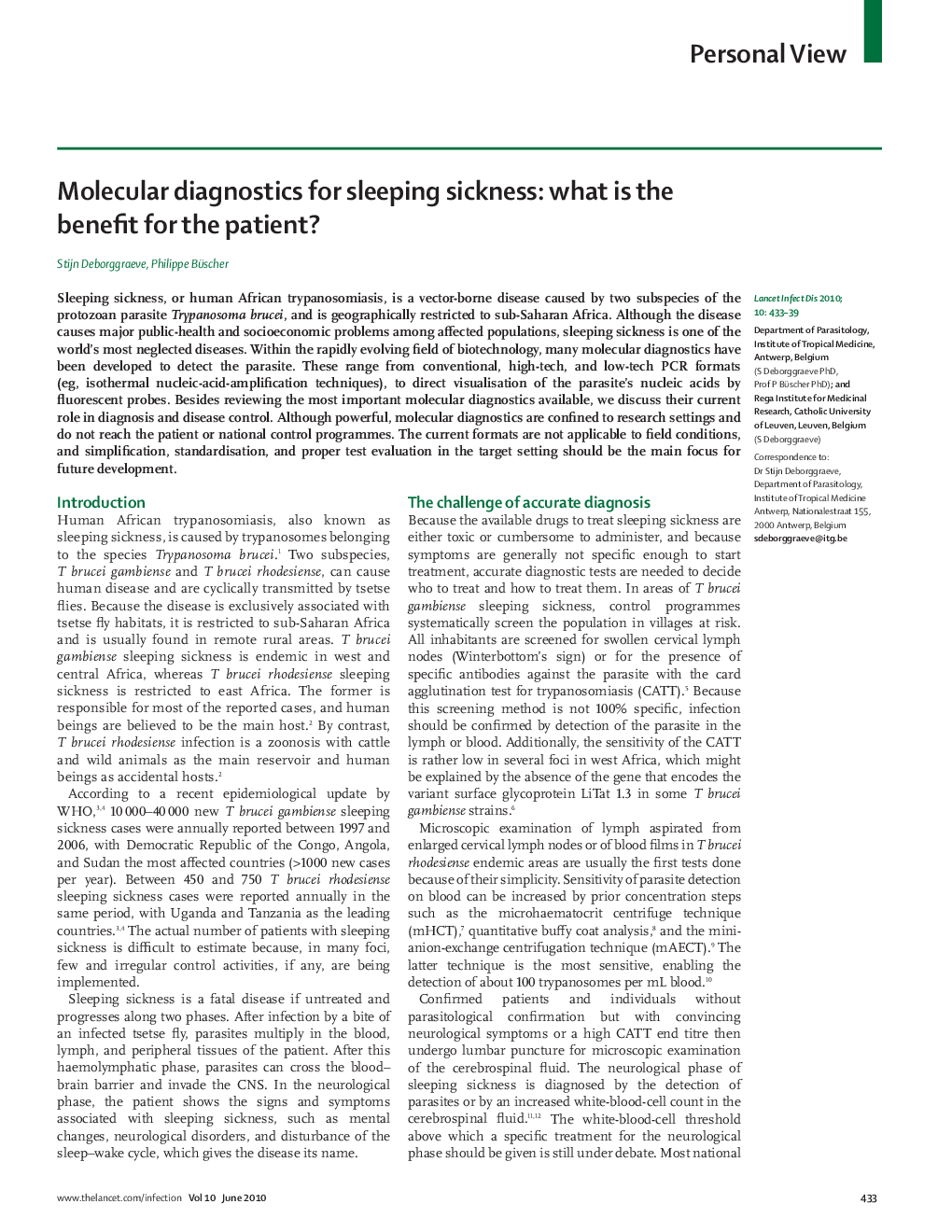| Article ID | Journal | Published Year | Pages | File Type |
|---|---|---|---|---|
| 3410621 | The Lancet Infectious Diseases | 2010 | 7 Pages |
SummarySleeping sickness, or human African trypanosomiasis, is a vector-borne disease caused by two subspecies of the protozoan parasite Trypanosoma brucei, and is geographically restricted to sub-Saharan Africa. Although the disease causes major public-health and socioeconomic problems among affected populations, sleeping sickness is one of the world's most neglected diseases. Within the rapidly evolving field of biotechnology, many molecular diagnostics have been developed to detect the parasite. These range from conventional, high-tech, and low-tech PCR formats (eg, isothermal nucleic-acid-amplification techniques), to direct visualisation of the parasite's nucleic acids by fluorescent probes. Besides reviewing the most important molecular diagnostics available, we discuss their current role in diagnosis and disease control. Although powerful, molecular diagnostics are confined to research settings and do not reach the patient or national control programmes. The current formats are not applicable to field conditions, and simplification, standardisation, and proper test evaluation in the target setting should be the main focus for future development.
